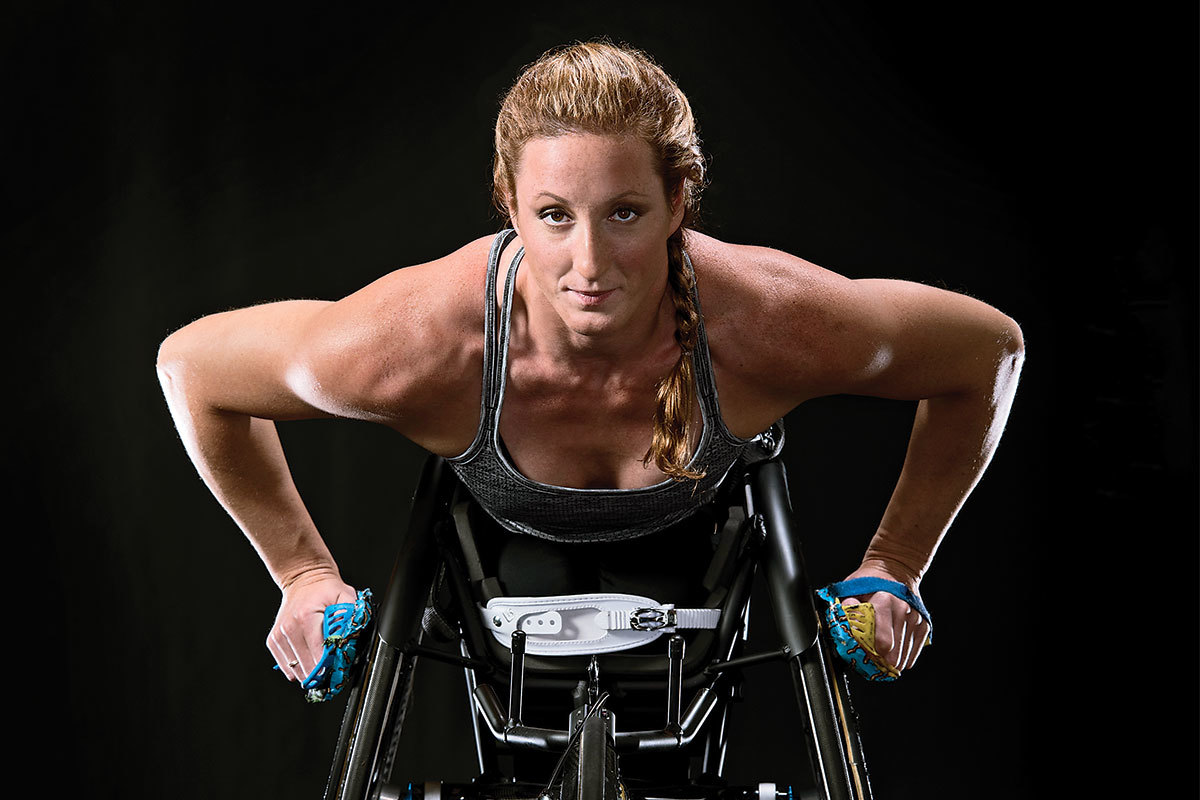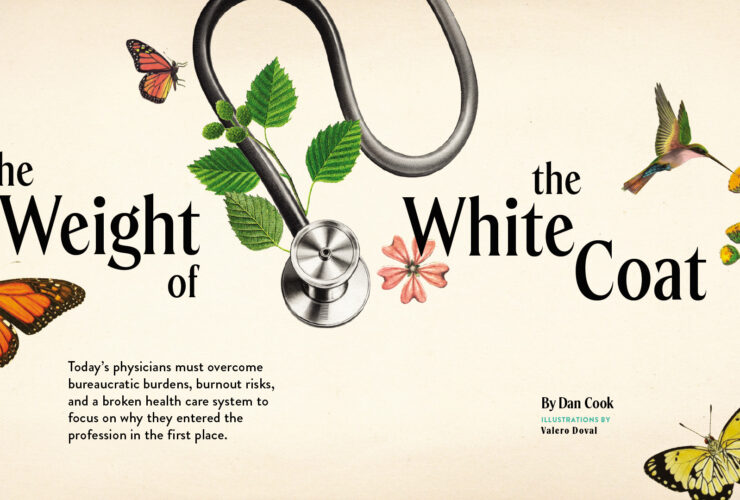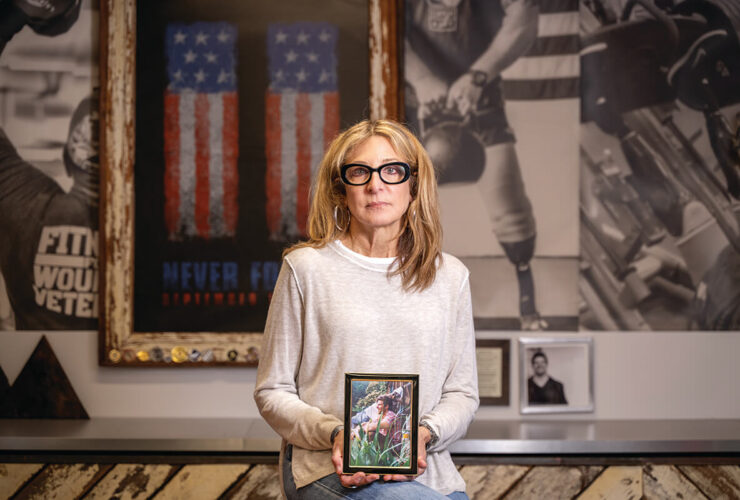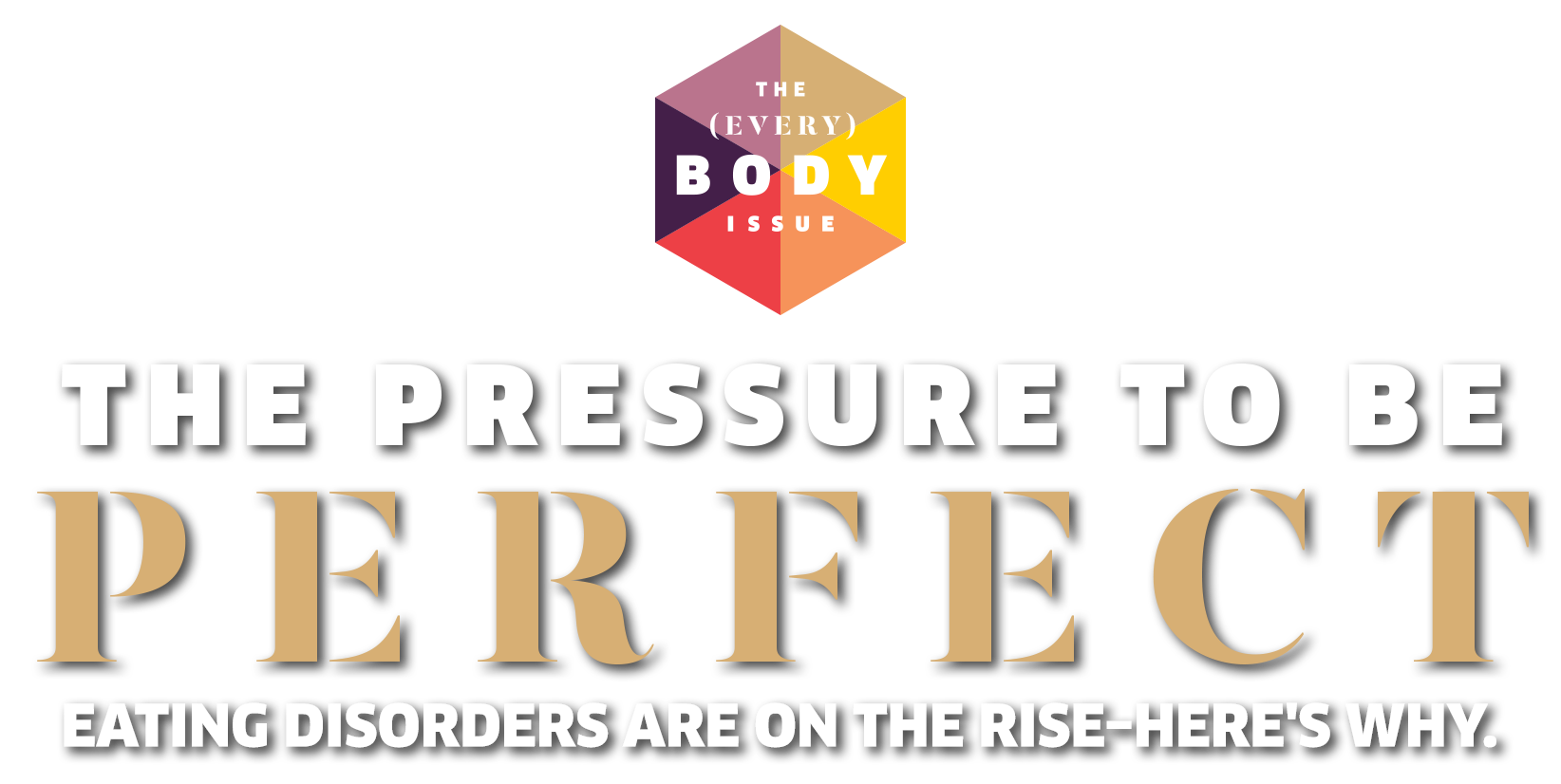
Health & Wellness
The Pressure To Be Perfect
Eating disorders are on the rise–here's why.


rowing up in Dundalk in the ’70s, Deborah Vojik had always been gangly. Then puberty hit, and her frame filled out. “By high school, I was 5 foot 10,” and my weight got up to 175, but I was never fat,” she says, “just big.” Like many young girls, her life’s dream was to model. She made the rounds at local modeling schools and was told the same thing: lose weight. “I was told that if I wanted to be a model, I had to lose like 50 pounds,” she says. So, by spring of her sophomore year of high school at Our Lady of Mt. Carmel High School in Essex, Vojik had adopted a strict near-starvation regimen, consuming no more than 500 to 700 calories a day. “When I went on a diet, I knew that I needed to lose some weight,” says Vojik. “But it all started as a means to an end.” Within weeks, it became something more. “I would pick at my food, and then microwave it until it was so dried out that my mom would say, ‘You can’t eat that.’ So I wouldn’t.”
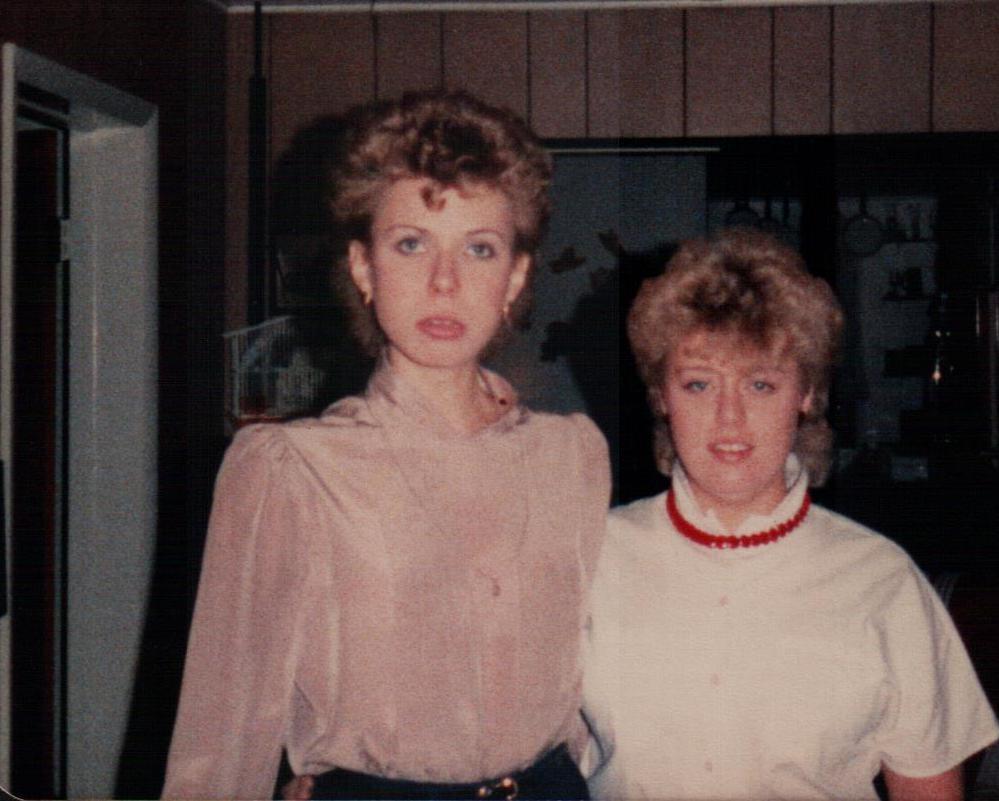
Vojik (left) at 89 pounds with sister (right) on November 1983.
Three months later, Vojik’s weight had dropped to an alarming 97 pounds. She was incredibly weak. She couldn’t make it through a meal without ingesting handfuls of antacids. Her periods had stopped. And then, a week before starting her junior year, chest pain and shortness of breath landed her a bed at Church Home and Hospital. Vojik was diagnosed with anorexia nervosa. “It was right around the time that [singer] Karen Carpenter had died from anorexia,” she recalls. “I was scared. I didn’t want to die.” It took her five years to recover, but over time, with the help of intensive therapy, she did. “Thirty-five years later,” says Vojik, sitting on a sofa in the office of her Parkville hot yoga studio, “I now wonder, ‘Who was I trying to be perfect for?’”
With her perfectionist personality, Vojik had all the hallmarks of a classic case of anorexia. “What we’ve learned is that for people who are working toward the ideal body, it only heightens body dissatisfaction—and the finish line keeps moving,” says Steven Crawford, co-director of The Center for Eating Disorders at the Sheppard Pratt Health System in Towson.
While teenage girls are particularly vulnerable, anorexia is on the rise across most populations. National surveys estimate that 20 million women and 10 million men in the U.S. will have an eating disorder at some point in their lives, according to the National Eating Disorders Association. “We are living at a time when all age groups are being impacted,” Crawford says. “We are seeing children as young as eight and, as the Baby Boomer generation tries to deal with the aging process, they, too, are turning toward eating disorders as a way of recapturing their youth. We are seeing all socioeconomic groups, all ethnicities, and all genders.”
Andrew Walen, founder of The Body Image Therapy Center in Columbia and president and executive director for the National Association for Males with Eating Disorders, was a bit of a rarity when he struggled with an eating disorder in the ’80s. Today, he would be one of many. “According to one report from the Journal of the Royal Society of Medicine, there has been approximately a 400 percent increase in males being hospitalized for anorexia from 1996 to 2011,” says Walen. And while eating disorders have a strong genetic component, social media has only made things worse.
“We say genetics loads the gun, environment pulls the trigger,” says the Columbia-based psychotherapist, who struggled for nearly 20 years. “Our children are at even greater risk because of the internet. The drive for popularity, likes, and followers, combined with the anonymous bullying, can greatly exacerbate comparison thinking, anxiety, and negative thoughts about themselves and their body.” Walen says more time spent on social media is directly correlated with negative self-esteem and body image.
How to Raise Your Kids in a Body-Image-Healthy Household
Co-director of The Center for Eating Disorders at Sheppard Pratt Stephen Crawford shares his top tips. For more information, go to eatingdisorders.org for a self-assessment and to learn about eating disorders.
Don’t diet. “Try to commit to a non-dieting household, so that diets are not the norm within the home,” says Crawford. “Steer away from messages like, ‘You need to finish your plate’ or ‘Don’t you think you’ve had enough?’ That’s an external message as opposed to trusting that the child will develop a sense of being able to connect with their own body cues for hunger or being full.”
Provide balanced meals with plenty of variety. “That way children will gravitate toward eating a variety of foods,” says Crawford. “If you’re not serving something, they will obviously not be eating it. You are normalizing the process of eating.”
Promote media literacy. “Emphasize that what your children see in the magazines are not real images,” says Crawford. “These images have been photoshopped. There have been studies that show that models struggle with self-image because they don’t look like what is shown.”
Appreciate your body for what it can do for you. “Help your kids recognize what their body gives them, not what it looks like,” says Crawford. “Comment on how great it is that their body allows them to play a sport or participate in an activity with their friends. If you take care of your body, your body takes care of you.”
Crawford concurs: “You have the capacity to take hundreds of selfies and then apply a filter—there are even apps where you can change your weight in the image. You can edit the photo so that it’s not you who is out there, but it portrays this ideal image.” The result? It distances us further from being comfortable with who we are, our “true selves,” says Crawford. “Social media plays a major role in increasing body dissatisfaction, promoting depression, and increasing the rate of eating disorders.”
Towson University student Katie (who prefers not to use her last name) suffered from disordered eating in high school and sometimes still struggles. She points to pro-anorexia accounts on Instagram, as well as other forums that promote eating disorders as a big part of the problem. “It’s extremely scary,” says Katie. “There’s a quote on one website that says, ‘That’s not your stomach growling, that’s your stomach applauding you.’”
Social media exacerbated her own issues, but Katie says that her eating disorder stemmed from her need to feel a sense of control against the backdrop of a chaotic home life. “I was always the biggest girl in my elementary-school class,” she says. Before turning 16, Katie vowed that she would shed the weight. Like Vojik, she starved herself through extreme calorie-counting and over-exercising. Her weight loss soon spun out of control. “It got to the point where I’d reached these milestones,” says Katie, who lost 65 pounds on her 5-foot-5-inch frame. “I was like, ‘How much more can I lose?’” Weighing herself, sometimes as often as three times a day, became an obsession. “My mood would rise or fall according to what I weighed,” she says.
With the help of The Center for Eating Disorders at Sheppard Pratt, Katie recovered several years back, though right now her weight is lower than she’d like. “It’s always with you,” she says. And, yet, she’s quick to remind herself, “It’s the inside that counts. That is so much greater than any number on a scale—that doesn’t fluctuate.” Vojik has reached a similar conclusion. “I look in the mirror and see someone I love very much,” she says. “My body and I are very happy together.”
